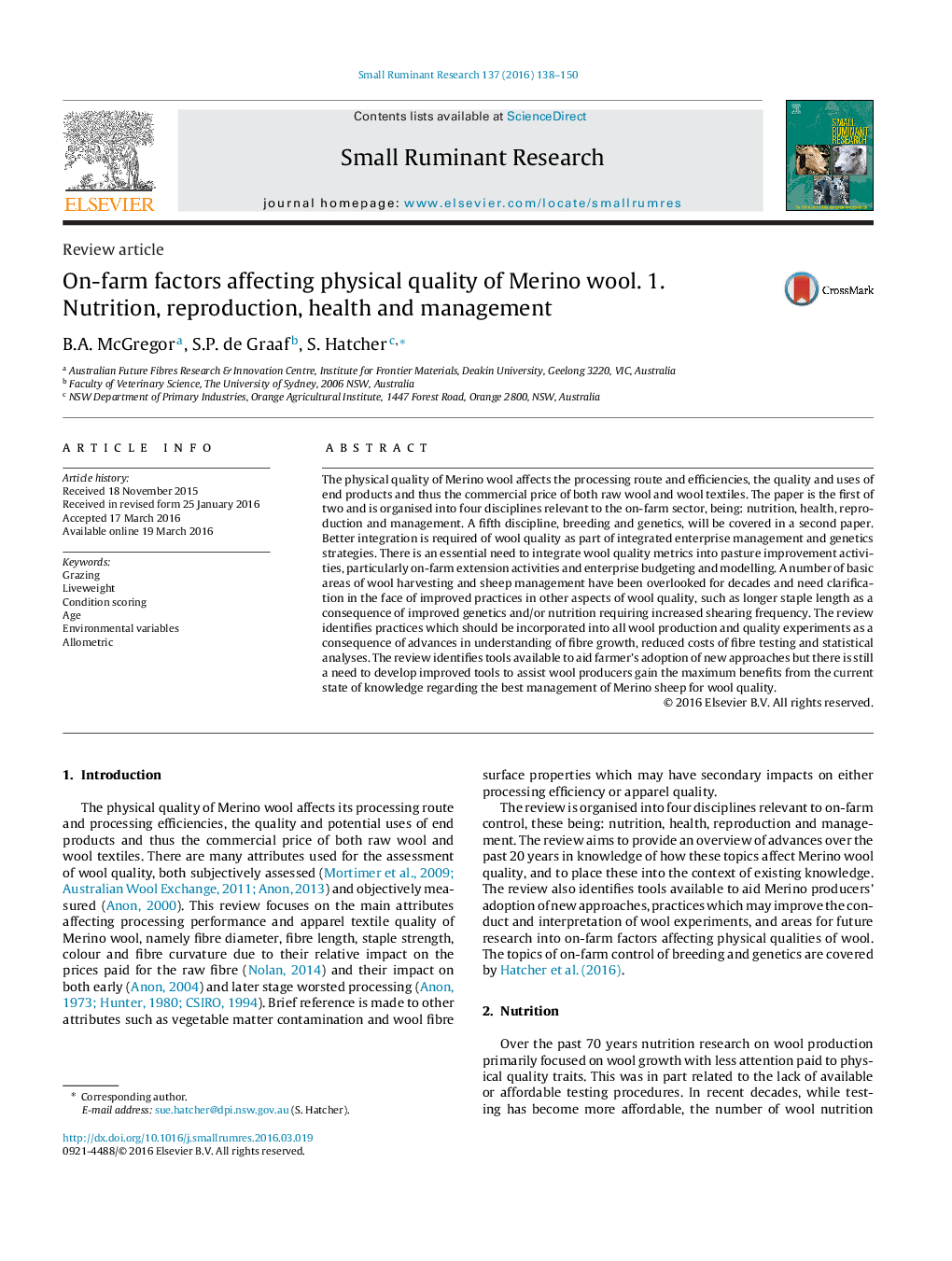| Article ID | Journal | Published Year | Pages | File Type |
|---|---|---|---|---|
| 2456784 | Small Ruminant Research | 2016 | 13 Pages |
•The physical quality of Merino wool affects the processing route, quality and end product use and thus the commercial value of raw wool.•On-farm nutrition, health, reproduction and management each affect key fibre quality traits of Merino wool.•Wool quality should be better accounted for in integrated sheep enterprise management and genetics strategies.•Wool quality metrics should be inlcuded into all wool production experiments, on-farm extension, enterprise budgeting and modelling.•Decision support tools are required to assist wool producers gain maximum benefits from best practice management of Merino sheep for wool quality.
The physical quality of Merino wool affects the processing route and efficiencies, the quality and uses of end products and thus the commercial price of both raw wool and wool textiles. The paper is the first of two and is organised into four disciplines relevant to the on-farm sector, being: nutrition, health, reproduction and management. A fifth discipline, breeding and genetics, will be covered in a second paper. Better integration is required of wool quality as part of integrated enterprise management and genetics strategies. There is an essential need to integrate wool quality metrics into pasture improvement activities, particularly on-farm extension activities and enterprise budgeting and modelling. A number of basic areas of wool harvesting and sheep management have been overlooked for decades and need clarification in the face of improved practices in other aspects of wool quality, such as longer staple length as a consequence of improved genetics and/or nutrition requiring increased shearing frequency. The review identifies practices which should be incorporated into all wool production and quality experiments as a consequence of advances in understanding of fibre growth, reduced costs of fibre testing and statistical analyses. The review identifies tools available to aid farmer’s adoption of new approaches but there is still a need to develop improved tools to assist wool producers gain the maximum benefits from the current state of knowledge regarding the best management of Merino sheep for wool quality.
